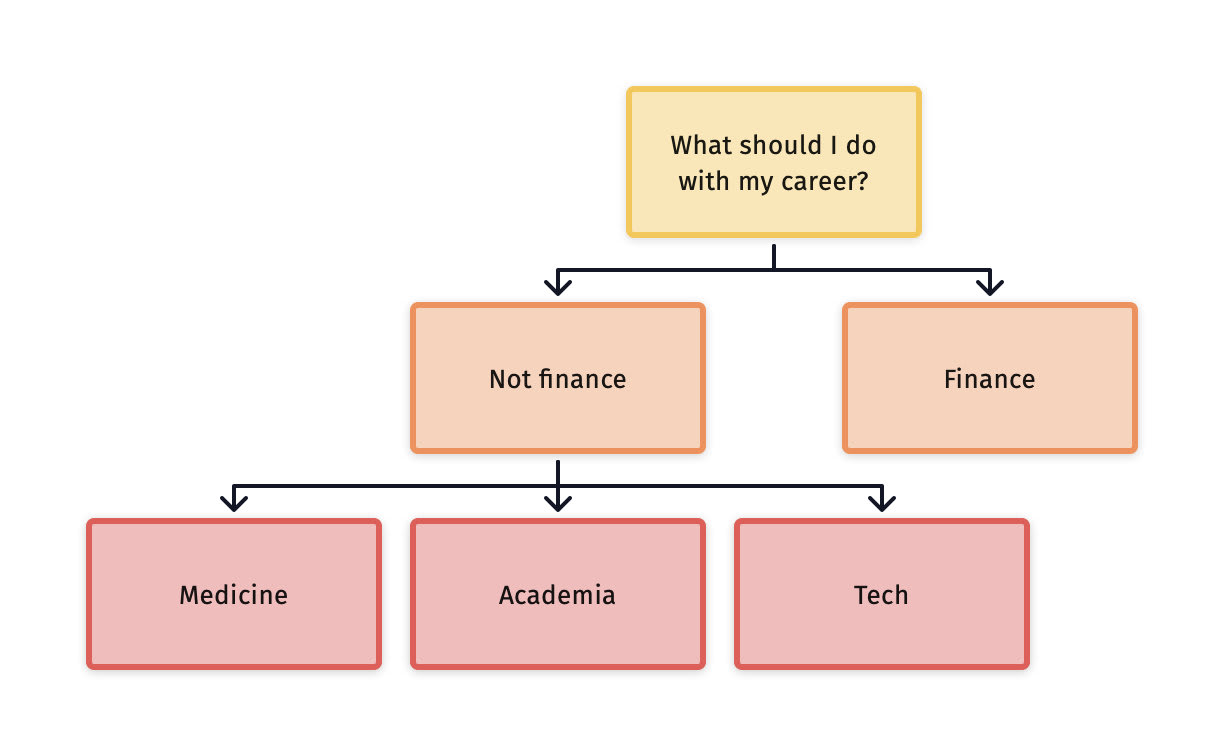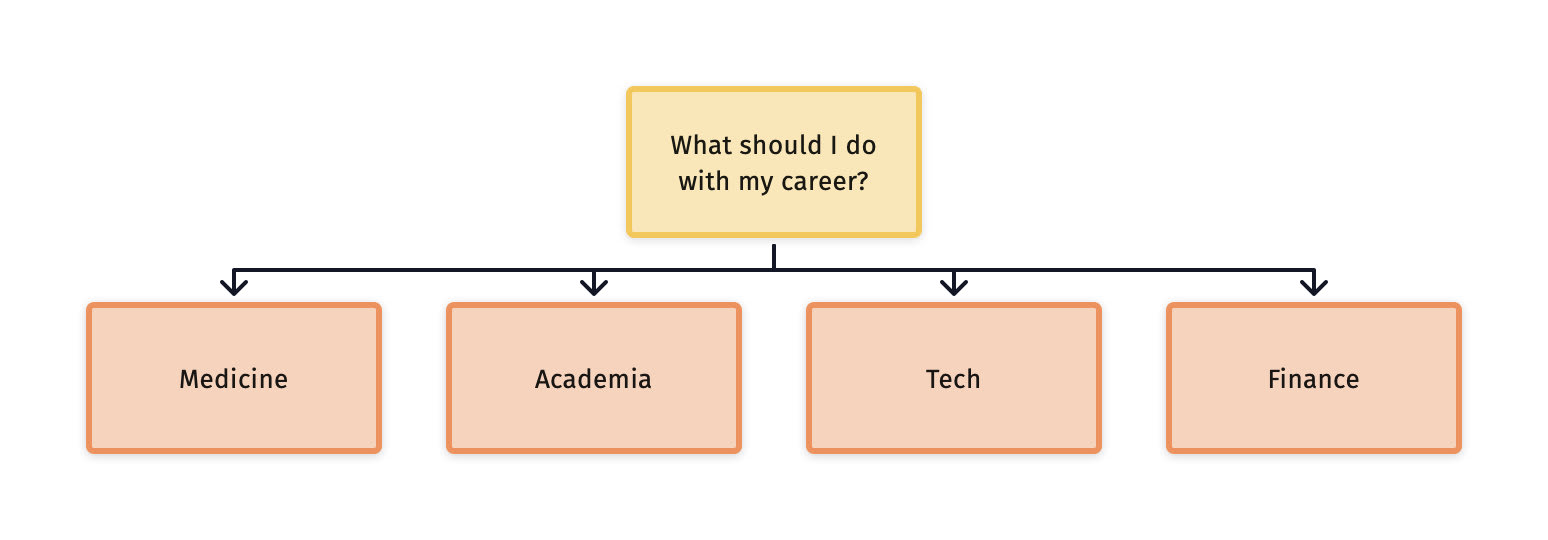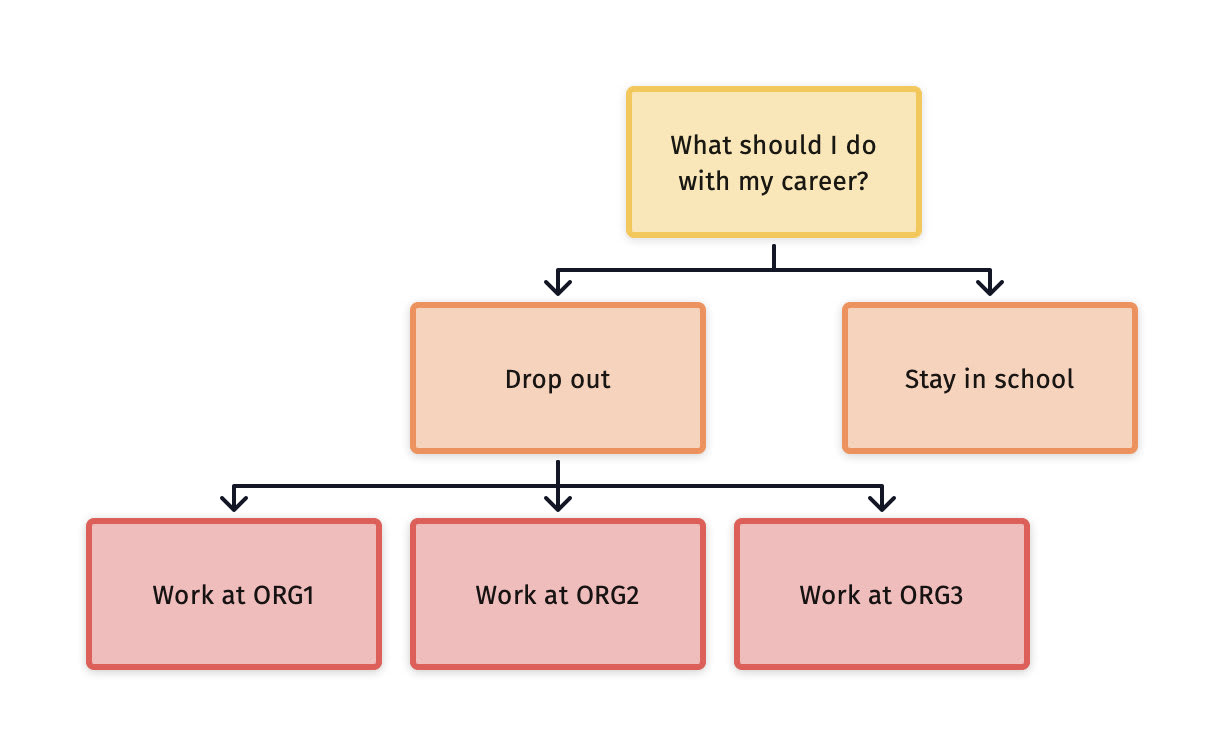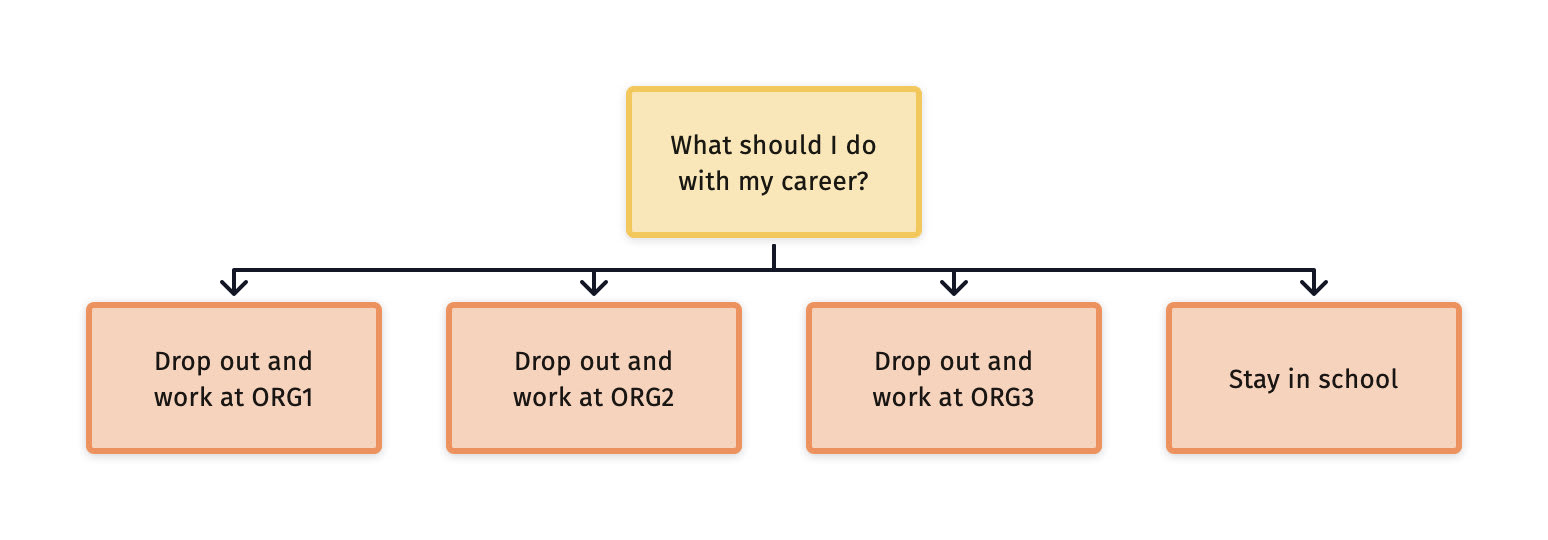The following career-choice diagram looks silly:

"Go into finance" is a career plan; "Don't go into finance" is the absence of a plan, so it shouldn't be a choice-node. It makes more sense for the diagram to look like:
Similarly, many people seem to implicitly use something like the following career-choice diagram when thinking about school:
However, "don't go to school" isn't a career plan, so it shouldn't be a choice node. The diagram should look more like:




I don't really see how the world is different whether or not you use the first or the second representation here? "Drop out and go work at a job" seems like a plan at a higher level of abstraction than "drop out and work in {area}," which is itself at a higher level of abstraction than "drop out and work in {area|position}," which is a higher level of abstraction than "drop out and work at ORG1."
What's the bright line between the first and the second?
Ah, I see. I guess I kind of buy this, but I don't think it's nearly as cut-and-dry as you argue, or something. Not sure how much this generalizes, but to me "staying in school" has been an option that conceals approximately as many major suboptions as "leaving school." I'd argue that for many people, this is approximately true - that is, people have an idea of where they'd want to work or what they'd want to do given leaving school, but broadly "staying in school" could mean anything from staying on ~exactly the status quo to transferring somewhere in a different country, taking a gap year, etc.